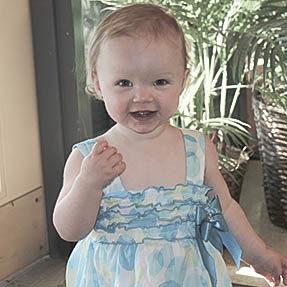Why Canada Published The Corded Window Covering Regulation Surpassing USA Standard.
Today, Canada announced that they will not harmonize their Corded Window Covering Regulation with the USA 2018 ANSI/WCMA Window Covering standard. Rather, Health Canada has published the strongest and safest regulation for corded window coverings in the world in order to help guide manufacturers in producing the safest products for the environments where our children live and visit.

The Heart of the Matter
Our founder, Linda Kaiser, began working on the U.S. standard development process for corded window coverings in 2009 when she was exposed to the fact that children were continuing to face injuries, even some leading to death, needlessly on corded window covering products although parents followed manufacturer safety tips and used failing safety devices. Why, after 30 years of hundreds of child injuries, were hazardous cords still being allowed on these products? Where was the heart of humanity in this issue?
All products involved in deaths and injuries typically have safety standards written by the manufacturers. The solution in solving safety issues with products does not lie in class action lawsuits or in developing laws within the states which may restrict daycares or housing authorities from using cords, although laws often help to guide regulators. The solution and heart of the matter is outlining the hazard patterns within the product safety standard so that manufacturers and innovators can be guided to create safe products.
In 2010, Linda teamed up with Rachel Weintraub from Consumer Federation of America and Carol Pollack Nelson of Independent Safety Consulting and pressed the industry inside of the U.S. standard development process to restrict the length of the accessible cords to 12 inches so products would be manufactured safe at the point of sale.
It was soon understood even after the United States Consumer Product Safety Commission (U.S. CPSC) Chairwoman demanded that the hazards be eliminated, manufacturers would continue to make minor standard changes that required the consumer to adjust products daily in order to keep them safe. This leaves varied actions to be taken in the realm of safety on the consumers’ part which can lead to unprecedented outcomes when parents are misinformed on everyday household products and the actions to be taken to prevent injury or death fails. Unfortunately the U.S. CPSC hands are tied by many federal laws protecting manufacturers and can only enforce a voluntary standard if an injury or death occurs and even if injury or death occurs the agency can flex very little under a voluntary standard.
Why CPSC hands are tied.
Parents for Window Blind Safety along with the Consumer Federation of America, Independent Safety Consulting, Consumers Union, Kids In Danger and other petitioners filed a petition for a mandatory rule to restrict window cords on all products in the USA in 2012. The proposed mandatory rule still sits at the feet of U.S.CPSC even though we still have a problematic standard that allows long hazardous cords on products sold in the United States to this day.
Rarely does the U.S. CPSC pass mandatory standards due to lobbyists hired by industries who use delay tactics to prolong the process which can last years.
Mandatory regulations were necessary after promises were made.

Linda realized that Canada had a mandatory regulation process much different from the United States. After speaking with a few moms in Canada who had lost their children, She participated in consultations on the Canadian Regulation so that a strong set of requirements could possibly compel the U.S. CPSC and the Window Covering Manufacturing Association (WCMA) to harmonize the problematic ANSI/WCMA standard to Canada’s robust regulation.
Parents for Window Blind Safety Canada was established by Candace Allard in memory of her daughter Bella. Linda flew to Canada several times working on the standard development process with Candace from 2011-2013 updating the Canadian safety standards. Due to the past problematic 2012 ANSI/WCMA standard that Canada was adopting, manufactures from Canada and the United States made an agreement to eliminate the hazards on all window covering products during their next USA standard opening in 2016. Safety experts and advocates expressed their frustration and angst that consumers in the USA would have to wait years while more deaths and injuries occurred on hazardous products that passed the U.S. ANSI/WCMA safety testing: products deemed safe but were anything but.
Canada withdrew from US ANSI/WCMA standard development process

During the prolonged opening of the 2017 U.S.ANSI WCMA standard development process, Health Canada immediately withdrew after hearing the standard scope would continue to allow hazardous cords on custom products. As stated in many press releases by several organizations and manufacturers, cordless technology is available today for 99% of product lines which would ultimately eliminate hazards associated with strangulation. Using inaccurate statements about the disabled and elderly to support the manufacturing of hazardous product designs, which has been done by WCMA, lies very close to a legal discriminatory line which may also make it difficult for some to unify with the organization.
Window covering parts that can be operated without hand or finger dexterity, fine motor movement, or simultaneous actions provide easier access and accommodate a broader range of users. For years, the elderly and disabled have been using special wands, cordless and motorized technology created by the industry in order to operate products.
What does the regulation say and can products on today’s market meet the regulation?
The Canadian Corded Window Covering Regulation:
(1) Restrict the length of accessible cords and the size of loops that can be created to help eliminate the risk of strangulation,
(2) Require that any cord that can be reached must be too short to wrap around a one-year-old-child’s neck (not more than 22 cm in length) or form a hazardous loop that can be pulled over a one-year-old-child’s head (not more than 44 cm in perimeter),
(3) Require that cord that cannot be reached would have to remain unreachable throughout the useful life of the product, and
(4) Require a warning on the product, packaging, instructions, and on associated advertisements that speak to the hazards and specifications outlined above, with instructions to immediately remove the product should those hazards become present.
Yes, hundreds of products on the market today can meet and be improved by this regulation. In fact, this regulation is very similar to the criteria of our Lab Testing, Mom Approved® program which awards manufacturers the use of our seal of approval after being tested by an independent lab.
Unfortunately, many products manufactured in the United States that comply with the problematic 2018 ANSI/WCMA Safety Standard will need to be adjusted in order to be sold in Canada.
The US ANSI/WCMA standard still includes:
1. Long accessible cords
2. Looped cords with devices that have broken away from walls or are simply not installed at all
3. Weak performance requirements that allows hazardous products to pass safety testing
For these reasons, our organization urges the U.S. CPSC to collaborate with the WCMA/WCSC to create a memorable standard that harmonizes with Canada’s regulation in order to create safe environments in the United States for places where our children live and visit.
Here’s what you need to know when buying window blinds in the United States:
- Custom ordered window blinds are allowed to have hazardous cords in the United States. Insist on cord-free products when purchasing custom.
- Products bought online may still be sold with cords. Be careful to purchase only cord-free products. Don’t be lured into clearance priced products with cords.
How Can I Identify Safe Window Coverings for my home or Daycare?
Parents for Window Blind Safety advises consumers seeking safe blinds to look for the following:
- Window coverings with no outer cords and tight inner cords
- Cordless products
- Products carrying the Parents for Window Blind Safety Seal of Approval which is awarded to cordless products that are Lab Tested, Mom Approved™
What About the Blinds in My Home?
Many households already use window blinds with accessible, hazardous cords. Wrapping cords around a cleat, or putting them on top of the valence isn’t enough to ensure the safety of children. Hundreds of young children have been strangled by cords that parents had thought were placed out of reach. The best course of action is to replace them with cord-free window coverings.
If you’re moving to a new apartment building, staying in a hotel, or visiting friends and family, be aware. Since blinds with dangerous cords haven’t been recalled, millions of hazardous window blinds remain in living spaces. Keep sleep and play areas free of cords. There is no action too small to ensure the safety of our children. Join us with your everyday, conscious decisions to eliminate hazardous practices in your home.
PFWBS, CFA and ISC Press Release on Canadian Regulations:

